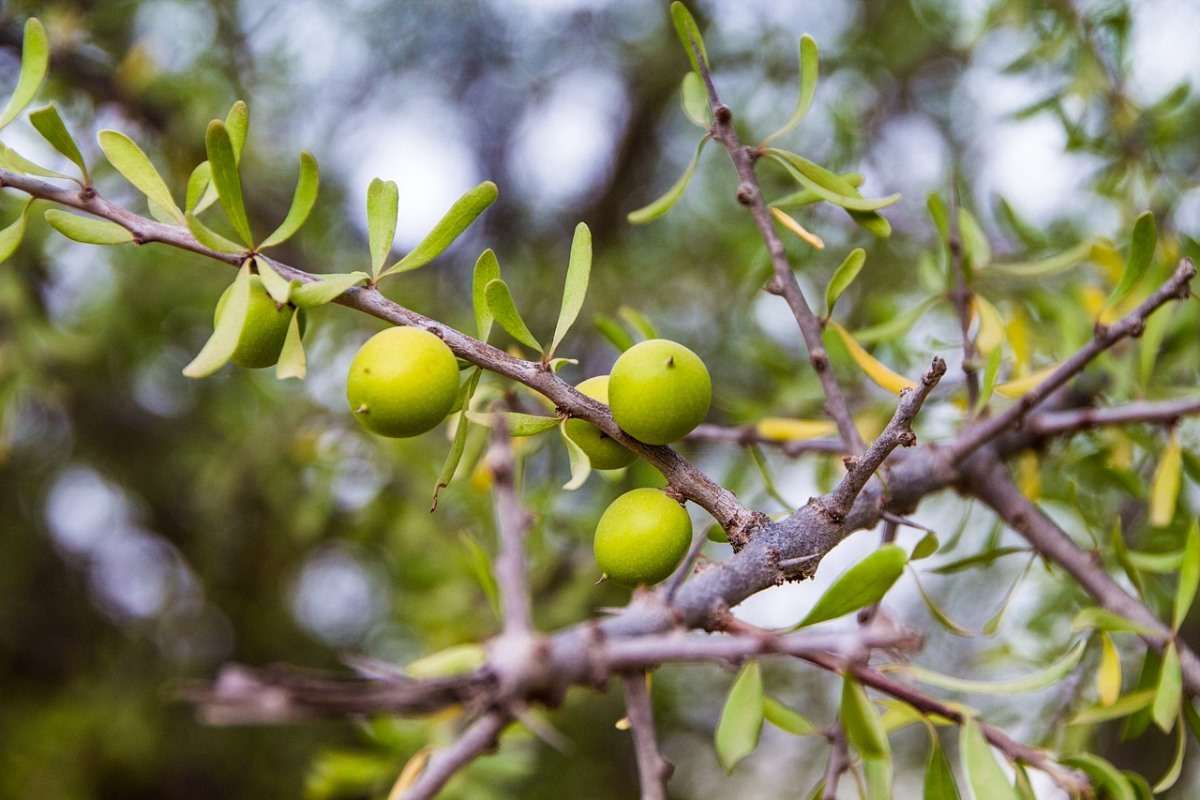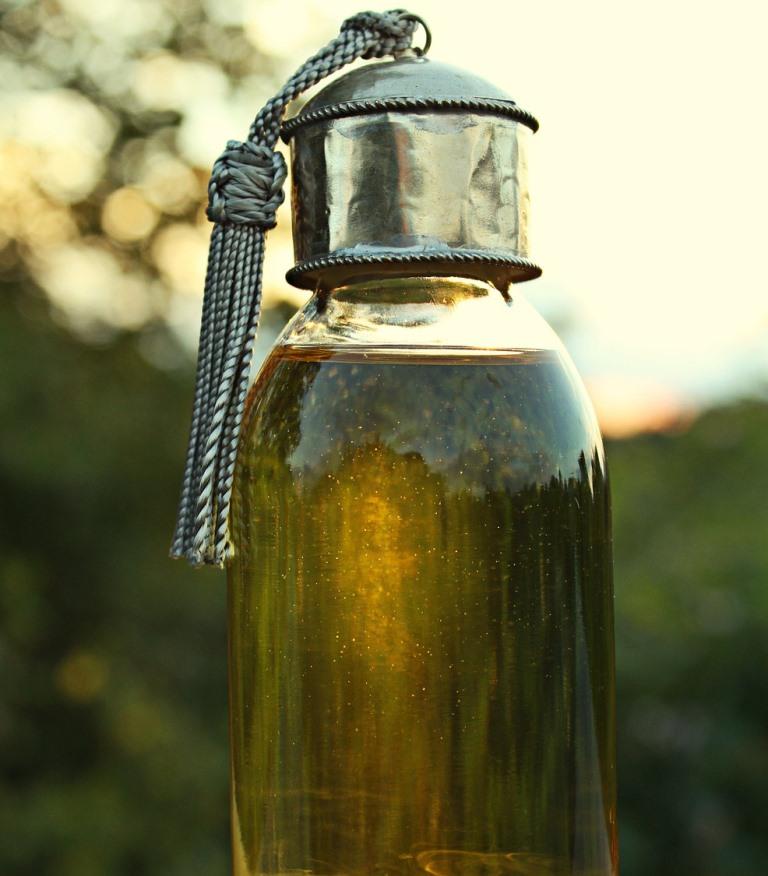Introduction to Argan Oil Project Report, Extraction Process, Manufacturing Business Plan: Argan oil is a rare oil that is rich in both oleic acid and linoleic fatty acids, majorly recommended to treat aid acne-prone skin. Argan oil is obtained from the kernels of nut present in the Argan fruit. It is extracted by using different extraction processes. Argan oil is also consumed to dip bread during breakfast or to drizzle on couscous or applied while eating pasta in many countries. It is even seen in cosmetic products. Argan oil is produced using the fruit kernel of the Argan tree. This Argan tree is cultivated in many parts of the globe because of its high medicinal value. Argan oil is touted as wonderful oil for cosmetic applications, particularly for hair and dry skin. Argania Spinosa (Argan) oil is obtained using the kernels of seeds from the Argan plant. Traditionally, Argan oil was employed in the culinary process, for treating skin infections, and in skin or hair care items.
Argan Oil Project Report, Extraction Process, Manufacturing Business Plan

Uses and benefits of Argan Oil: The Argan oil extraction machine is used to extract the Argan Oil. The oil contains several nutrients for instance unsaturated fatty acids, tocopherol vitamin E, sterols, and squalene. These vital ingredients have anti-inflammatory properties and act as antioxidants. Some of the main advantages of Argan oil are mentioned below:
- Defend against free radicals which are responsible for early aging and wrinkles on the skin;
- Moisturizing, soothing, toning and the body skin;
- Exfoliating the skin and remove dead cells;
- Eliminating razor bumps and rashes;
- Hair and nails conditioning;
- Antioxidant and skin protection: The presence of tocopherols and anti-oxidants, the oil helps to guard the skin against UV radiation-induced free radical factors.
- Moisturizing and skin hydration: Daily consumption and use of Argan oil will improve skin hydration by increasing the water-holding capacity. This will avoid water loss through the skin.
Business plan for starting Argan Oil Manufacturing Business
To start the profitable venture of Argan Oil Manufacturing Business, you need to design a perfect business plan to lay a successful path:
- Market demand of Argan Oil Manufacturing Business
- Implementation schedule of Argan Oil Manufacturing Business
- List of approvals required for starting Argan Oil Manufacturing Business
- Area required to start Argan Oil Manufacturing Business
- Raw materials required for starting Argan Oil Manufacturing Business
- List of machinery required to start Argan Oil Manufacturing Business
- Manufacturing process of Argan Oil
- Project economics of Argan Oil Manufacturing Business
- Profitability in Argan Oil Manufacturing Business
Market demand of Argan Oil Manufacturing Business
The market potential of Argan Oil is expected at 26.9 million USD in 2021. It is also estimated that it might reach 33.2 million USD by the end of the year because of its numerable health benefits. Argan Oil market has an extensive growth rate CAGR of 7.2% throughout 2022 – 2028. This huge increase in demand is because of the high health benefits in it. It is rich in fatty acids, tocopherol vitamin E, sterols, and squalene compared to other essentials oils.
Implementation schedule of Argan Oil Manufacturing Business
- Market analysis and demand, applying for loan 0 – 1 month
- Preparation of business plan 1 – 2 months
- Financial support or investment 2– 4 months
- Selection of location and establishment of unit 3 – 4 months
- Power and water connection facility: 4 – 5 months
- Building construction and shed development 5 – 6 months
- Machinery and equipment purchase 6 – 7 months
- Procuring raw materials and recruiting of manpower 8 – 9 months
- Trial operations 10th month
List of approvals and permits required to start Argan Oil Manufacturing Business
The next step to start Argan Oil Manufacturing Business in India is acquiring the below list of licenses, permissions, and registrations –
- Register your business identity
- MSME registration
- GST registration
- ROC
- Get the PAN Card
- Registration of firm
- Shop Act License
- FSSAI License
- IEC Code
- Export License
- Fire and Safety
- ESI
- PF
- No Objection Certificate from pollution board
- Trade license from local municipal authority
Land and building construction for starting Argan Oil Manufacturing Business
The area required to establish the Argan Oil Manufacturing unit is 400 – 500 sq. mt. This is the minimum land required to establish a small-scale unit.
Raw materials required for starting Argan Oil Manufacturing Business
Argan nut has kernels that are rich in oil content are the raw materials used for extracting the oil.
The manufacturing process of Argan Oil
In case if you miss this: Walnut Oil Project Report.

Argan tree bears a fruit that is a small, and round, oval, or conical shape. A thick peel covers the fleshy pulp. The fleshy pulp is around a hard-shelled nut that is about 25% of the weight of the fresh fruit. The nut includes 1 to 3 oil-rich Argan kernels. Extraction will provide 30% to 50% of the oil in the kernels, which is majorly decided by the extraction method.
Extraction is the main procedure to obtain the oil. In this process, people first dry Argan fruit in the open air and then separate the fleshy pulp. Some even remove the flesh directly by skipping the drying step. Moroccans commonly use the flesh for animal feed. In Morocco, traditionally, goats were allowed to climb Argan trees to feed Argan fruits. The kernels are then collected from the goat droppings, which will decrease the labor-intensive task of removing the thick peels by people. However, in modern days, the thick peels are manually removed.
The next step includes cracking the Argan nut to obtain the Argan kernels. It was also tried mechanically but the step was not possible. Thus this time-consuming and labor-intensive task is still done manually. Workers commonly roast kernels that are important for Argan oil. After the Argan kernels return to normal temperature, laborers grind and push them. The brown-colored mash releases pure, unfiltered Argan oil. Finally, the unfiltered Argan oil is transferred to the vessels. The residual press cake that is rich in protein is commonly useful as cattle feed.
Similarly, cosmetic Argan oil is even manufactured using Argan kernels but here they are not roasted to evade an extremely nutty aroma. The decanted Argan is the oil is left to stand for about 2 weeks, so the suspended solids and impurities settle to the bottom. The clearer Argan oil is again filtered, based on the necessary clarity and purity. Pure Argan oil might still contain some sediment.
Semi-industrial production of Argan Oil
In the semi-industrial extraction of Argan oil, the kernels of the Argan tree are not ground manually but done with the electric hydraulic oil press. They are made of stainless steel to prevent contamination of the Argan oil. By this process, the usage of excessive water is lessened and manual work is reduced. Even the crop yields are almost 13 % more than the regular process. Even the troubles with modern oil presses or even centrifuges are not there and the quality of the oil is sustained.
During the process, the Argan oil is often exposed to high temperatures that may cause changes in the structure of the fatty acids that are crucial for the oil quality. So the producers must take care of this step and try to optimize the temperature that will not affect the product quality by damaging the structure of the oil.
Some of the manufacturers, add their presses using almonds nut or shells and the fruit bitter pulp, and that is the reason why the Argan oil extracted this manner can easily be recognized with the bitter aroma and taste.
Decantation and filtration process of Argan Oil
After the pressing step, the Argan oil is sent to a decanter. Due to the pressing process, the fresh Argan oil is not clear m the starting and is turbid. As a result, there is a resting period for two weeks which clears the turbidity and the suspended solids will get settled at the bottom. The clear Argan oil is now gently decanted and if needed will undergo a filtration stage.
Better quality can be obtained by filtration of the Argan oil after the pressing step. Based on the degree of purity required the oil is filtered up to three times. After this step, the Argan oil is again transferred into a vessel. One month later after the pressing procedure, the Argan oil will acquire all its typical properties.
A small percentage of sediment left in the sales units cannot be prevented and does not at all influence the quality of the Argan oil. The sediment in a way assures the naturalness of the oil and proves that it is being sold without refining step. When the bottle is shaken, the sediment dissolves in the oil, but our suggestion is to leave it at the lowest end and use it without dissolving.
Argan Oil Project Report/ Economics of Argan Oil Manufacturing Business in India
You may also check this: Onion Oil Project Report.

Land and building construction on a rental basis: Rs. 3,00,000
Cost of Machinery: Rs. 2,39,500
Pre-operative expenditure: Rs. 29,500.
Fixed capital investment:
- Machinery: Rs. 2,39,500
- Pre-operative expenses: Rs. 29,500
- Total: Rs. 2,69,000
Working capital analysis:
- Argan nuts: Rs. 1,20,000
- Scented Argan seed oil 500 lit. @ 60/lit.: Rs. 30,000
- Packing materials (plastic containers, cartons, etc.): Rs. 20,000
- Total: Rs. 1,70,000
Utilities:
- Wood 30 quintals @ Rs. 120/qtl.: Rs. 3,600
- Electricity 300 KWH @ Rs. 3.00: Rs. 900
- Total: Rs. 4,500
Staff and Labour:
- Skilled labour: Rs. 10,000
- Unskilled labour: Rs. 7,500
- Salesman: Rs. 3,000
- Accountant: Rs. 2,500
- Peon: Rs. 2,000
- Total: Rs. 25,000
Other expenses
- Rent: Rs. 2,500
- Transport and travel: Rs. 2,000
- Telephone: Rs. 400
- Stationery: Rs. 100
- Publicity: Rs. 1,000
- Sale tips: Rs. 1,000
- Other miscellaneous expenses: Rs. 2,000
- Taxes and levies: Rs. 500
- Total: Rs. 9,500
Total working capital per month = 1,70,000 + 4500 + 25,000 + 9,500 = Rs. 2,09,000.
The total capital investment:
- Fixed capital: Rs. 2,69,000
- Working capital: Rs. 2,09,000
- Total: Rs. 4,78,000
The cost of production (per annum):
- Depreciation on machinery and equipment @ 10%: Rs. 22,950
- Depreciation on furniture @ 20%: Rs. 2,000
- Recurring expenditure (per annum): Rs. 25,08,000
- Interest on total cap. Investment @ 14%: Rs. 66,920
- Total: Rs. 25,99,870
Turnover of Argan Oil Manufacturing Business
Argan seed oil turnover 92.4 MT @ Rs. 30,500/ton: Rs. 28,18,200 (Say Rs. 28,20,000).
Profit in Argan Oil production
Profit = Rs. 28,20,000 – Rs. 25,99,870 = Rs. 2,20,130.
Net profit ratio = Profit x 100/Turnover = 7.8%.
- Handicraft Making at Home: A Small Profitable Business Idea
- Pet-Tech Startups: Innovations for Animal Lovers
- Tech Repair Services: Meeting the Demand for Gadget Maintenance
- Maximizing Rewards: Smart Credit Card Habits for Cashback and Points
- Ultimate Guide to Making Money from Goat Milk Business
- How to Start an Agricultural Value Added Product Business
- Value-Added Business Ideas for Greenhouse: The Best Ways to Make Profits with Greenhouse Farming
- How to Make Profits with Organic Country Chicken: Best Strategies for Beginners
- 10 Value-added Business Ideas for Millets: Low-investment and Highly Profitable
- Why Cleaning Service Business Becoming More Profitable in Metro Cities in India
- 10 Best Businesses to Start in Ayodhya for Profits
- Top Drone Business Ideas in India: Unlocking Aerial Innovation & Opportunities
- Top 10 Service Businesses You Can Start with No Money
- Ultimate Guide to Starting a Home-Based Advertising Agency Business
- Starting a Nail Salon Near Your Location: Check List, Business Plan, Licensing, and Opening Instructions
- Construction Company Name Ideas: Guide to Create New Construction Company Names
- 8 Best Small Businesses to Start in Hyderabad: Low-Cost and Profitable
- 10 Best Small Businesses to Start in Massachusetts: Low-Cost and Profitable
- 10 Best Small Businesses to Start in Maryland: Low-Investment and Profitable
- 10 Best Small Businesses to Start in Delaware: Low-Investment and Profitable
- 10 Best Small Businesses to Start in Connecticut: Low-Investment and Profitable
- Top 10 Best Online Pet Business Ideas: Exploring Cats to Dogs
- 10 Best Small Businesses to Start in Colorado: Low-Investment and Profitable
- Top 10 Profitable Small Business Ideas in California: Low-Investment Tips